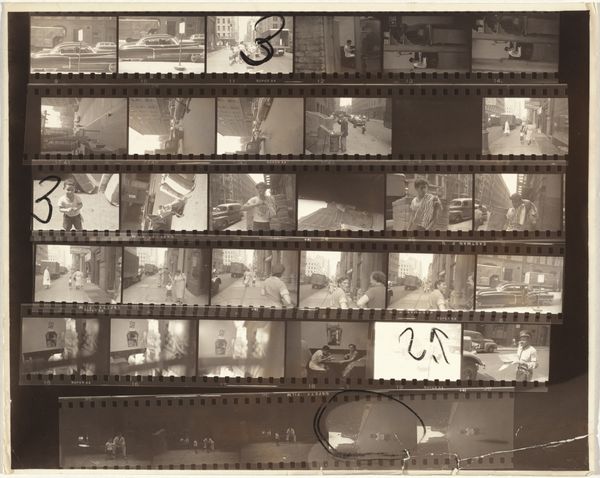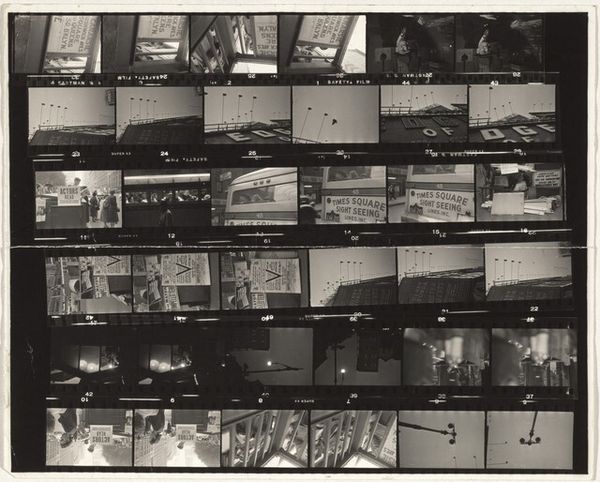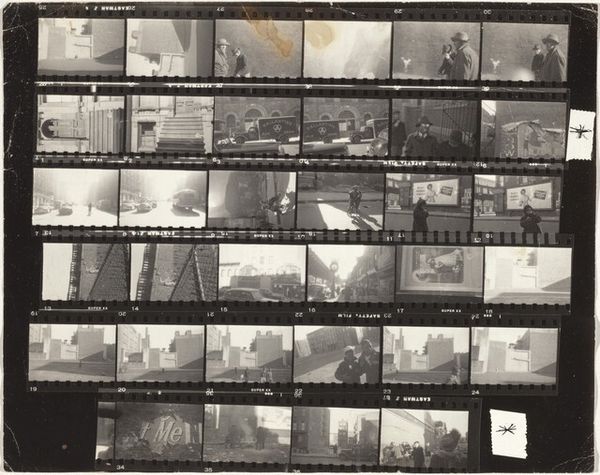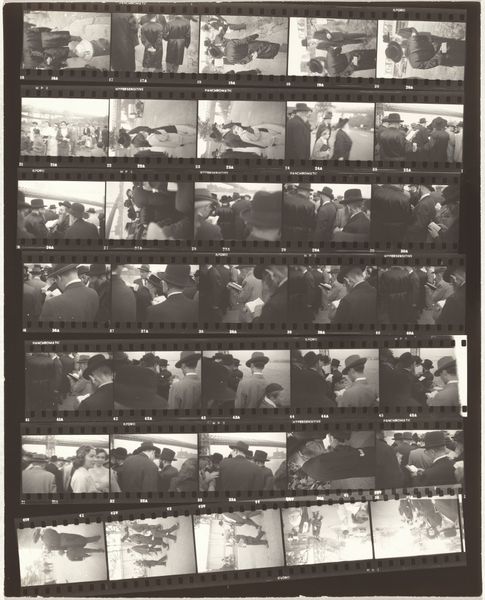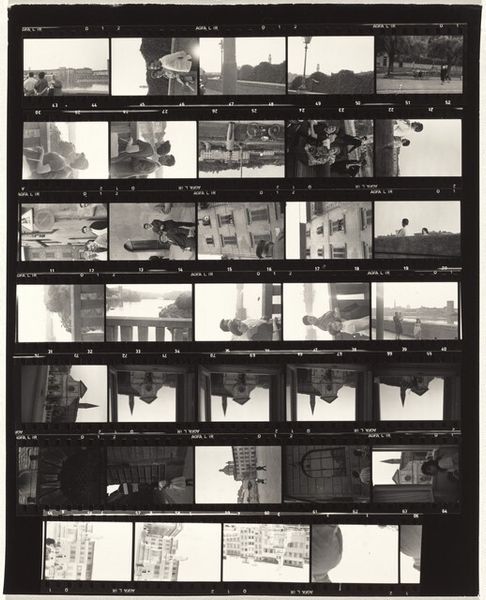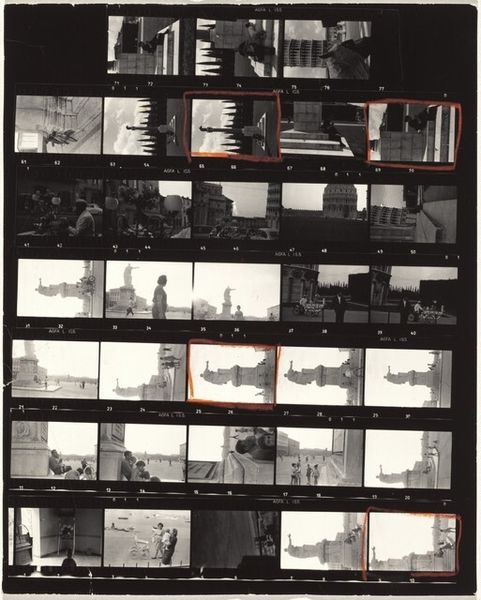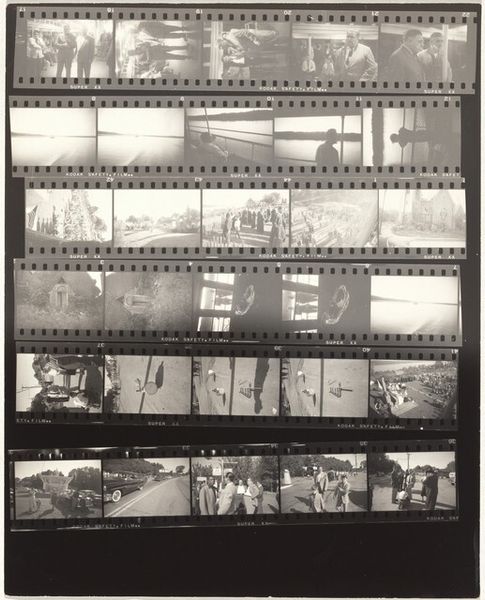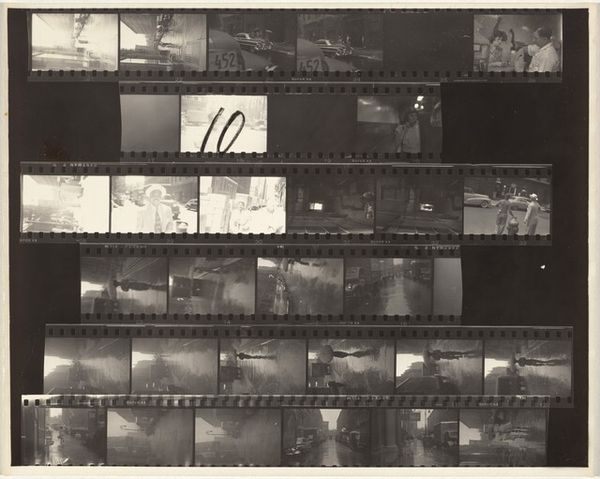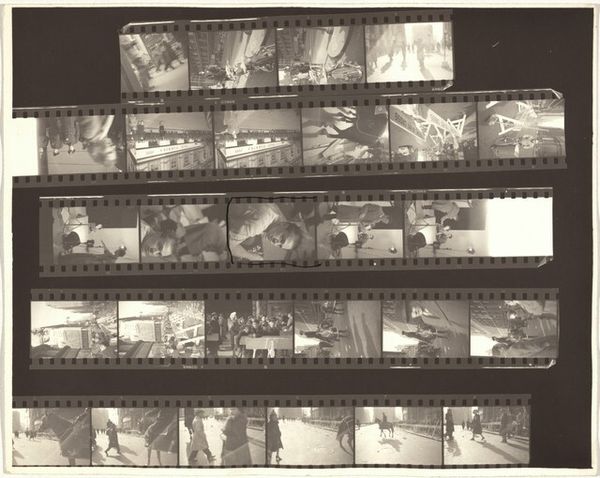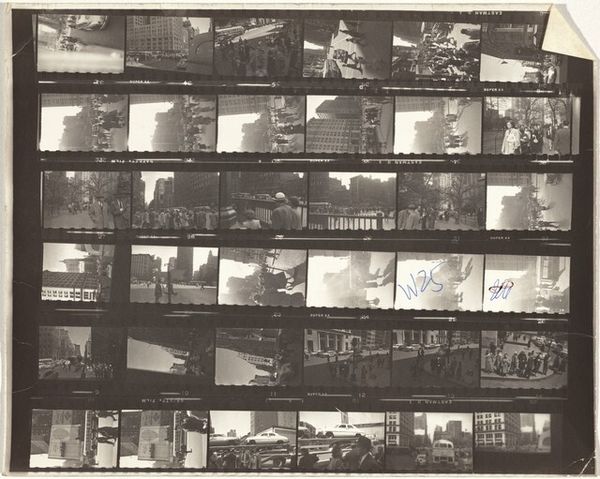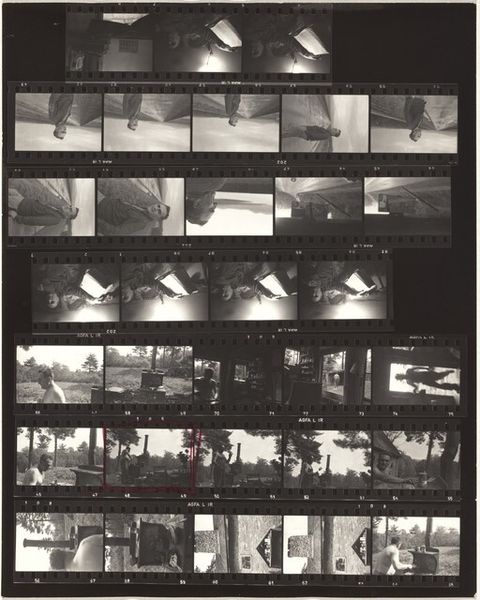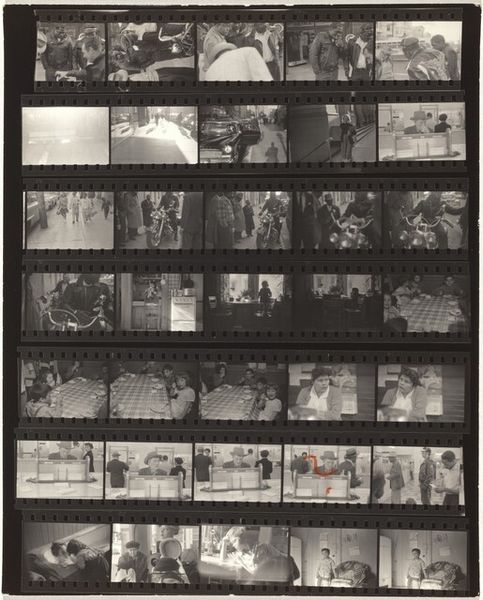
Dimensions: overall: 20.3 x 25.3 cm (8 x 9 15/16 in.)
Copyright: National Gallery of Art: CC0 1.0
Curator: We're looking at Robert Frank's "11th Street story 21", a gelatin-silver print made around 1951. It's essentially a contact sheet, presenting multiple frames from a roll of film. Editor: My initial feeling is fragmented. It's like witnessing multiple narratives unfolding simultaneously. The black and white tones add to the gritty realism, and the stark contrasts highlight the almost voyeuristic quality of street photography. Curator: Absolutely. Frank was deeply engaged with the social landscape. Consider the Ashcan School influence, this desire to portray ordinary life, particularly the experience of urban dwellers and the immigrant experience. This contact sheet form further emphasizes that raw, unfiltered glimpse. Editor: And that form also becomes the content. The way these scenes are juxtaposed raises questions about class, labor, about the very fabric of urban existence. Take those scenes under the bridge. They are heavy, industrial. Juxtapose those images against a scene with the Santa Fe ads. There are clear economic narratives that can be deconstructed there. Curator: Right, this period was marked by burgeoning social inequality and Frank captured that tension, though his subjectivity does play a significant role. Some might argue it borders on exploitation of the subjects captured within these frames. Editor: Indeed. Even in this photographic technology, in a society increasingly dominated by images and representations, power is never really in the hands of the subjects. Curator: These photos, which form a single unit, feel like pieces of evidence, moments frozen in time that invite us to question not only what we see but also why we are seeing it in this way. It makes it a really evocative piece for discussing history. Editor: I agree, the way it lays bare the photographic process and forces us to grapple with issues of representation, power dynamics and storytelling. This image, fragmented as it is, serves as a potent reflection of urban life in the mid-20th century and is as provocative today.
Comments
No comments
Be the first to comment and join the conversation on the ultimate creative platform.
